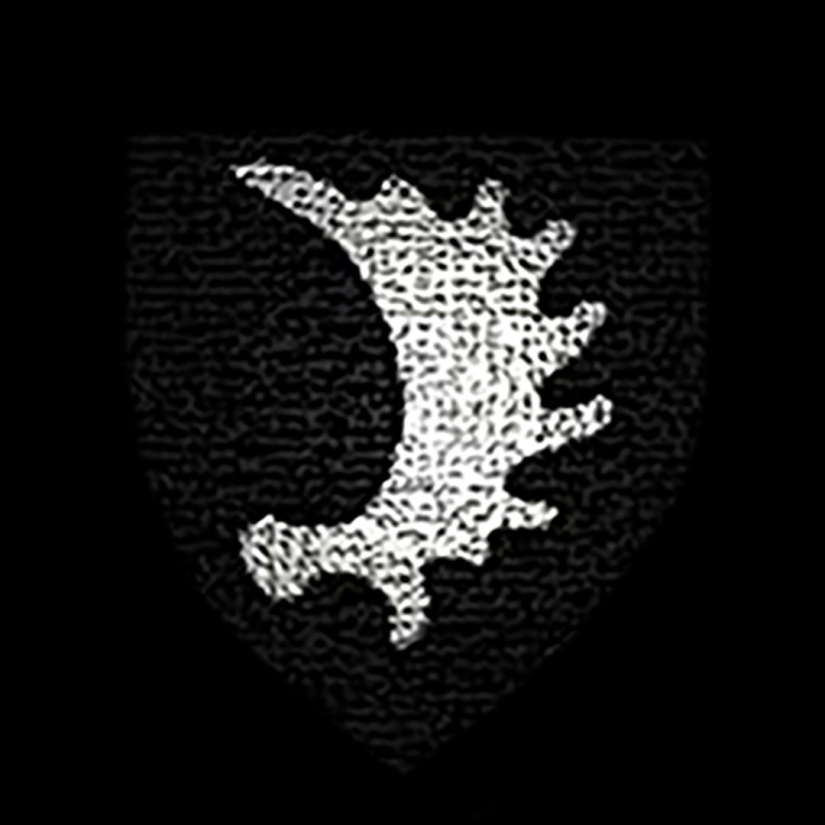The First German Empire lasted 1000 years. It was established in 800 AD, was reconfirmed in 962 AD and dissolved in 1806. Officially it was known as the Holy Roman Empire.

After the death of Charlemagne, the Empire split into West Frankia… which gradually became France…and East Frankia which continued as the German Holy Roman Empire. In 962 the Empire was reconfirmed by Otto I, who consolidated control over the autonomous stem duchies of Franconia, Bavaria, Swabia, Saxony, and Lotharingia. The single headed eagle was the coat of arms of the Empire until 1440, when the two headed eagle was adopted, signifying that the empire was both spiritual and secular.


The double headed Eagle of the Holy Roman Empire of the German Nation, adopted in 1440 to replace the original single headed eagle used since 800 AD. The hand-colored woodcut, showing the states of the Holy Roman Empire in 1510, was produced in Augsburg by Hans Burgkmair and Jost de Negker. The woodcut shows 56 coats of arms from the Empire. The top, larger shields, are those of the seven Prince Electors. On the right wing are the ecclesiastical: Trier, Cologne and Mainz as well as of the titular “Prefect of Rome” … on the left wing are the secular: Bohemia, Electorate of the Palatinate, Saxony and Brandenburg.
The Empire was always a decentralized, limited elective monarchy composed of hundreds of sub-units, principalities, duchies, counties, Free Imperial Cities, and other domains. The power of the emperor was limited, and while the various princes, lords, and dukes of the Empire were vassals and subjects who owed the Emperor their allegiance, they also possessed an extent of privileges that gave them de facto sovereignty within their territories. The seven Prince Electors were responsible for choosing an Emperor…or Kaiser…from the various powerful German dynastic families. They include the Hohenstaufen dynasty, the Hapsburg dynasty, the Hohenzollern dynasty, and the Welf dynasty. All of these important families originated in Swabia, or Schwaben, a region in Germany that was located in what is now part of the states of Baden-Württemberg and part of Bavaria.
Austrian Habsburgs led the German Empire for its last 369 years and dissolved the Empire in 1806, after its defeat by Napoleon at the Battle of Austerlitz. Germany was split apart and ruled by Napoleon for 7 years, until the successful Freedom Wars of 1813. From then on, for the next 58 years, there was a general yearning for a Second Reich, a new stronger German Empire, and a period of growing nationalism ensued..
Competition for who would lead a new Empire was a toss up between Austria and Prussia. Austrian leadership of the German states began waning with the ascendency of Prussia, especially after 1740 when Frederick the Great began his 46 year reign. Prussia became a new world power and successfully challenged the Austrians in the Seven Years War. The final blow came in 1866. The Austro-Prussian War settled the question of who would lead a new German Empire. This Seven Weeks War in 1866 was a civil war fought by Prussia and mostly north German states versus Austria and mostly southern German states.


Prussia won the the Seven Weeks War and directly annexed some of the German states that had sided with Austria, such as Hanover and Nassau. In an act of leniency, Prussia allowed Bavaria, Baden and some of the larger Austrian allies to maintain their independence.
The final step to a new German Empire was the Franco Prussian war of 1870. Five years after the Austro Prussian War, France declared war on Prussia and gave the Germans a reason to unite. Prussia rallied German public opinion and even gained the support of their previous enemies, the south German states of Bavaria, Württemberg, and Baden. With Prussian armies led by a proven General Staff and battle hardened troops, Chancellor Bismarck was confident of victory and laid out the final plans for German unification.

France was overconfident. They feared that Prussia was getting too powerful and they were convinced that they could win and preserve their status as Europe’s pre-eminent power. They were emboldened by the reorganization of the French army in 1866. They were equipped with new rifles and the latest machine guns and felt superior to the Germans. Also, Napoleon III believed a French victory would increase his failing popularity with French citizens. International observers were sure that France would win the war.

What actually happened is that France was quickly out-maneuvered and defeated. Napoleon III was captured and released into exile in England. France then declared itself a Republic and continued fighting until the siege and surrender of Paris in January 1871. Prussia was victorious and ready to announce formation of a new German Empire. In a strong symbolic show of force, the new Reich was announced in France, the country that ended the first empire in 1806. Prussian King Wilhelm, the victor of the Franco-Prussian War, was hailed as Germany’s new Emperor in the halls of the Versailles Palace in France.


Explore images on brand new products at my stores




